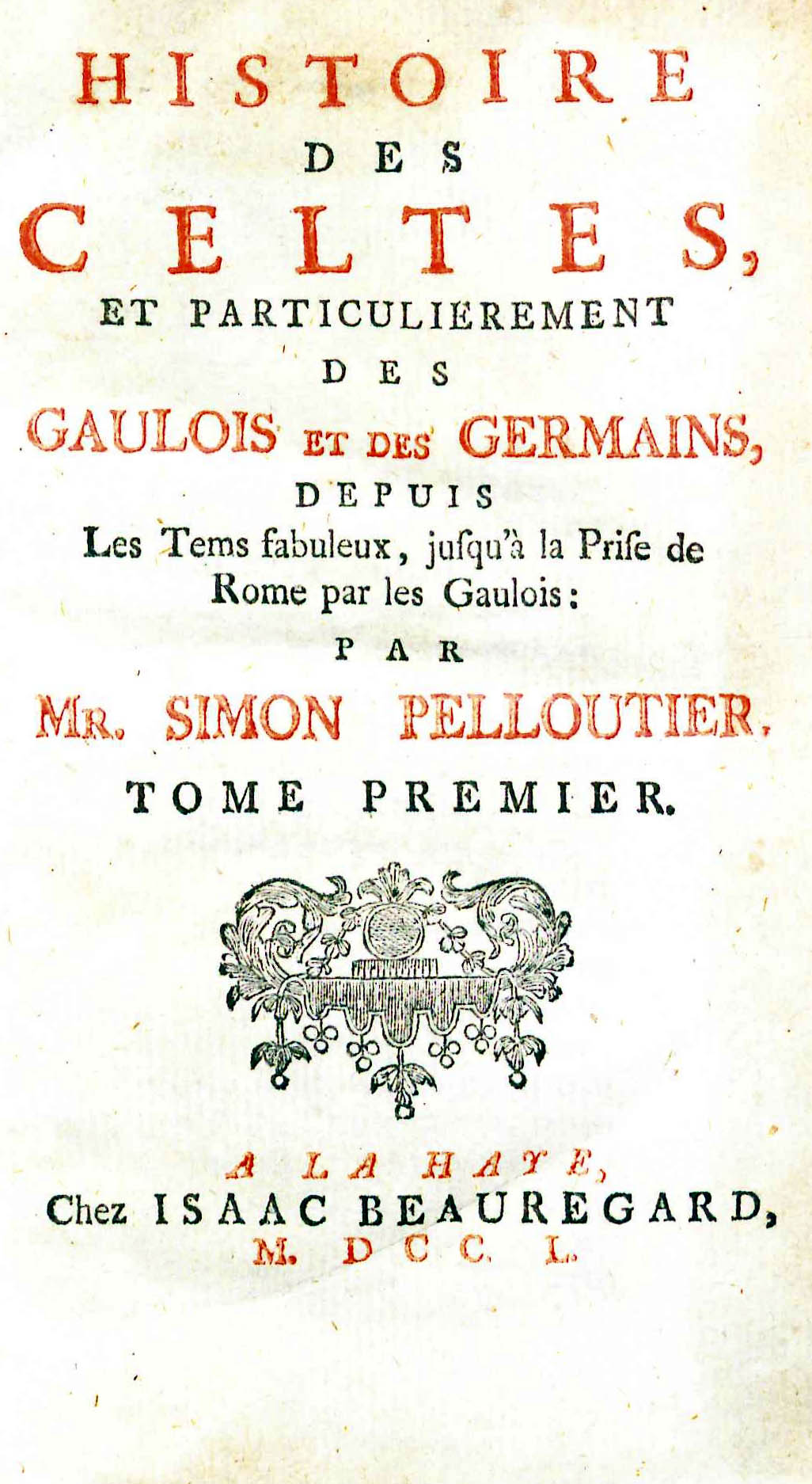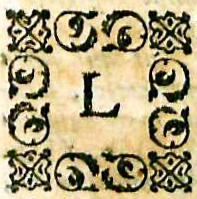Histoire des Celtes
Histoire des Celtes: et Particulierment des Gaulois et des Germains, Depuis les Tems Fabuleux, Jusqu'à la Prise de Rome par les Gaulois
by Simon Pelloutier
| Histoire des Celtes | |
|
Title page from Histoire des Celtes: et Particulierment des Gaulois et des Germains, Depuis les Tems Fabuleux, Jusqu'à la Prise de Rome par les Gaulois, volume one, George Wythe Collection, Wolf Law Library, College of William & Mary. | |
| Author | Simon Pelloutier |
| Published | À La Haye: Chez Isaac Beauregard |
| Date | 1750 |
| Language | English |
| Volumes | 2 volume set |
| Desc. | 12mo (17 cm.) |
L’Histore Des Celtes is Pelloutier’s only notable work, but it assured him a lasting reputation.[4] It is divided into four books, or sections. The first focuses on the Celts’ origins, the country they inhabited, the different names they called themselves throughout history, and their language.[5] The second book examines the Celts’ mores, customs, and activities.[6] The third explores their laws and dogmas, and the fourth discusses Celts’ religious ceremonies and Celtic and Scythian philosophy.[7]
Evidence for Inclusion in Wythe's Library
Both Dean's Memo[8] and the Brown Bibliography[9] include Simon Pelloutier's Histoire des Celtes based on notations made by Thomas Jefferson in his commonplace book. Both Dean and Brown cite Alan Smith's dissertion, "Virginia Lawyers, 1680-1776: The Birth of an American Profession".[10] Brown also references Jefferson's commonplace book at the Library of Congress, noting "Jefferson regularly cites this book in his Legal Commonplace Book at a time shortly following his personal study under Wythe (circa 1763), but within a possible window of influence from Wythe." Jefferson studied law beginning in 1762.[11] He recorded a purchase of Pelloutier's work in 1785,[12] so it seems likely he used a copy owned by Wythe in 1763. Both Dean and Brown list the 1750 edition, and the Wolf Law Library purchased a copy of the same edition.
Description of the Wolf Law Library's copy
Bound in contemporary calf with triple gilt rules to boards. Spine features five raised bands and gilt ornamental compartments. Title and volume labels are black morocco with gilt lettering.
View this book in William & Mary's online catalog.
References
- ↑ Richard Alfred Davenport, A Dictionary of Biography: Comprising the Most Eminent Characters of All Ages, Nations and Professions (Exeter: J.& B. and Williams, 1843), 411.
- ↑ Louis Gabriel Michaud, Biographie Universelle: Ancienne et Moderne ou L’Histoire par Ordre Alphabetique, de la Vie Publique et Privée de Tous les Hommes Qui Se Sont Fait Remarquer par leur Ecrits, Leurs Actions, Leurs Talents, Leurs Vertus ou Leurs Crimes (Paris : CH. Delagrave et Compagnie, 1821), 32:417.
- ↑ Davenport, A Dictionary of Biography, 411.
- ↑ Michaud, Biographie Universelle, 32:417.
- ↑ Ibid.
- ↑ Ibid.
- ↑ Ibid.
- ↑ Memorandum from Barbara C. Dean, Colonial Williamsburg Found., to Mrs. Stiverson, Colonial Williamsburg Found. (June 16, 1975), 13 (on file at Wolf Law Library, College of William & Mary).
- ↑ Bennie Brown, "The Library of George Wythe of Williamsburg and Richmond," (unpublished manuscript, May, 2012) Microsoft Word file. Earlier edition available at: https://digitalarchive.wm.edu/handle/10288/13433
- ↑ Alan McKinley Smith "Virginia Lawyers, 1680-1776: The Birth of an American Profession" (PhD diss., The Johns Hopkins University, 1967), 262.
- ↑ William Clarkin, Serene Patriot: A Life of George Wythe (Albany, New York: Alan Publications, 1970), 40.
- ↑ Brown, "The Library of George Wythe of Williamsburg and Richmond."


